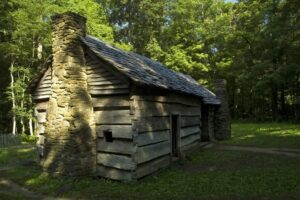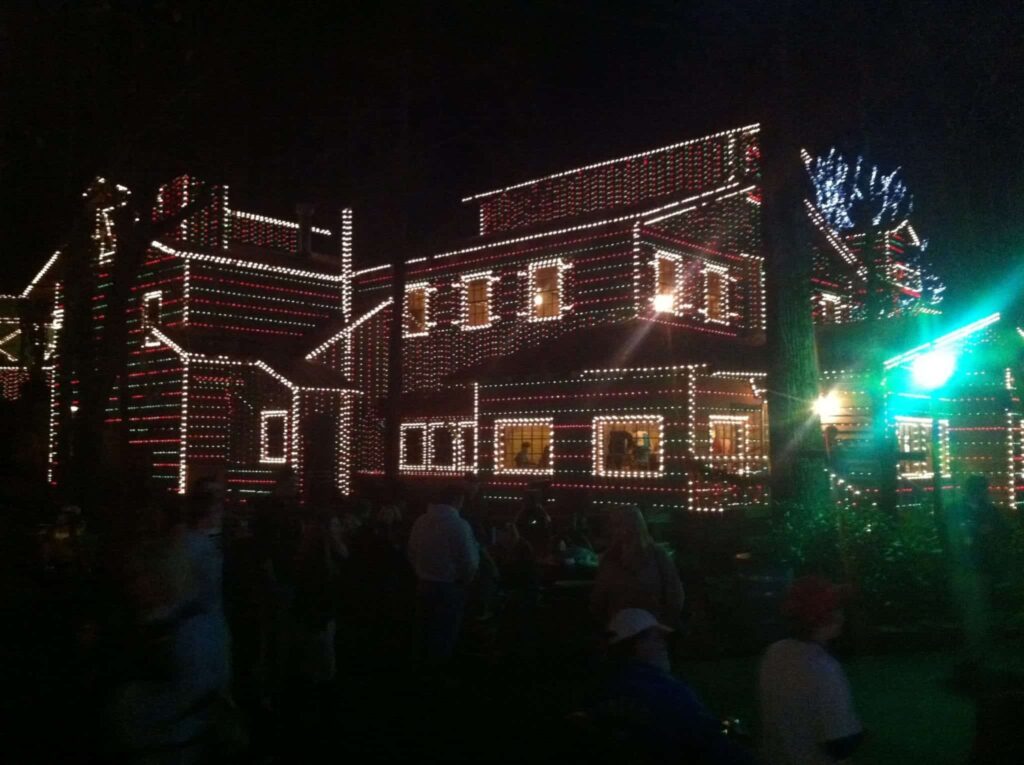At one time, Roaring Fork was a small community with its own homes, school, church, store and mills. Today, it’s a historic area and a nature trail that has become one of the most popular sightseeing spots for visitors to the Great Smoky Mountains National Park.
Roaring Fork in the Smoky Mountains earned its name from the Roaring Fork stream that
flows alongside the Roaring Fork Motor Nature Trail. The “roaring” name comes from the noise that the stream makes after a heavy rain. Generally, the stream is quiet and peaceful, but after it rains, the mountains echo the roaring noise of the rushing water.
Highlights of Roaring Fork Smoky Mountains Historic District
The Jim Bales Place
This is the first place you’ll see along the Roaring Fork Motor Nature Trail. The Bales family was one of the first few to settle in the area, and Jim lived in Roaring Fork for most of his life. Their house sat on farmland. When the National Park Service got control of the land, the house (which had been remodeled into a modern frame house), was torn down.
Today, you can see the Bales’ original corn crib and barn as well as the Alex Cole Cabin which was moved from the Sugarlands area to Roaring Fork.
 The Ephraim Bales Place
The Ephraim Bales Place
This is the cabin of Ephraim, Jim’s older brother. This was a dog-trot cabin which was two adjacent cabins with about 10 feet in between, but with a continuous roof. The space between the two cabins were popular for dogs because it was a great place to cool down in the summer or stay warm in the winter months.
Today, the cabin sits right below where the Jim Bales place was originally located. It is in its original location and remains mostly the same as it did in the 1900s. You can also see the corn crib, barn and hog pen.
The Alfred Reagan Place
Sitting below Ephraim’s place, Alfred Reagan owned a small area of land. He was a descendant of the first settlers and was known for operating the blacksmith shop, general store, and grist mill. He also donated land and helped build the Roaring Fork Church where he became a part-time preacher.
His farm had many buildings, but today you will only find his cabin and mill.
 About Roaring Fork Smoky Mountains – Motor Nature Trail
About Roaring Fork Smoky Mountains – Motor Nature Trail
The Roaring Fork Motor Nature Trail is known for more than its historic buildings. It also has a beautiful display of wildflowers to see in the spring and early summer months.
The trail runs 5.5 miles long and it’s a 1-way loop road. It’s open throughout the spring, summer, and fall.
Directions to Roaring Fork Smoky  Mountains
Mountains
From the Gatlinburg Parkway, take traffic light #8 and follow the Historic Trail Road to the Cherokee Orchard entrance of the Great Smoky Mountains National Park. Right past the parking areas for Rainbow Falls, you can take the Roaring Fork Motor Nature Trail. From Gatlinburg, it is only about 1 mile to Roaring Fork.
Did you enjoy this post about Roaring Fork in the Smoky Mountains? Click here to learn more about the Great Smoky Mountains National Park.



